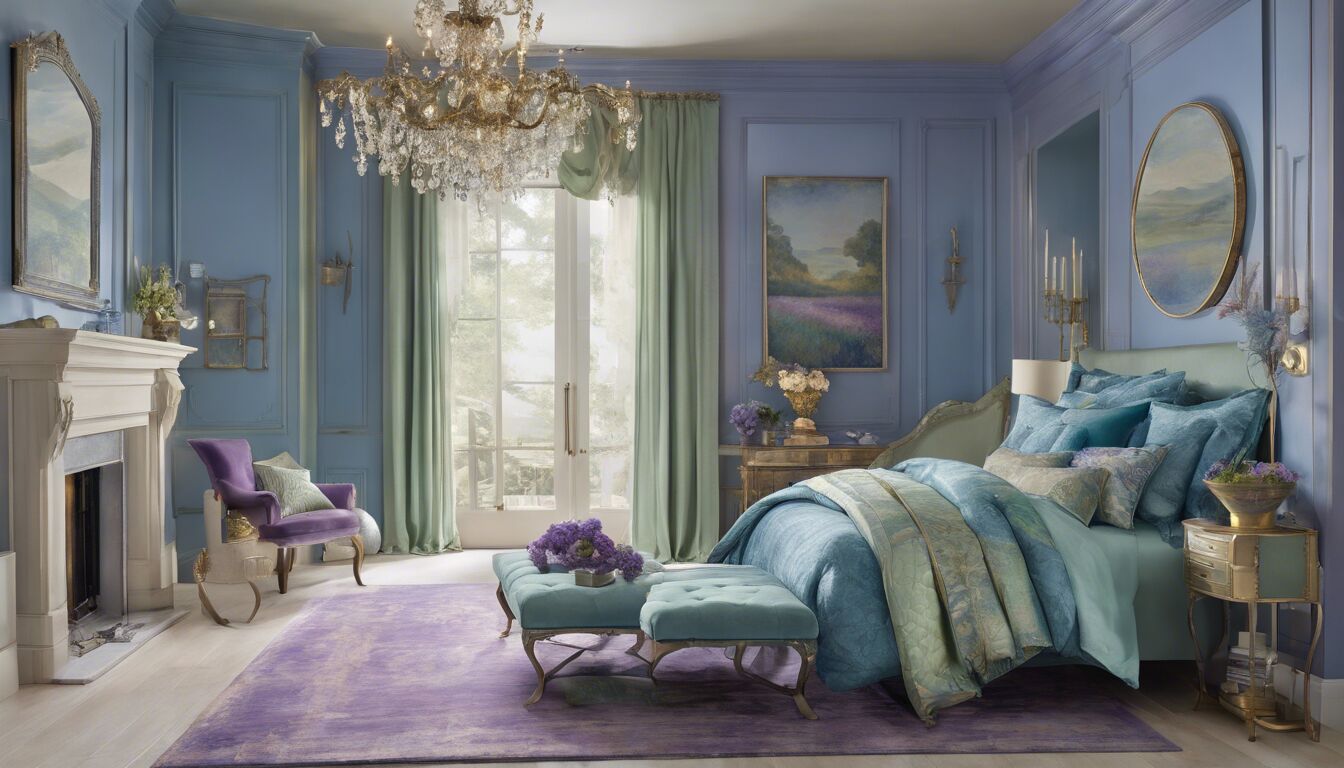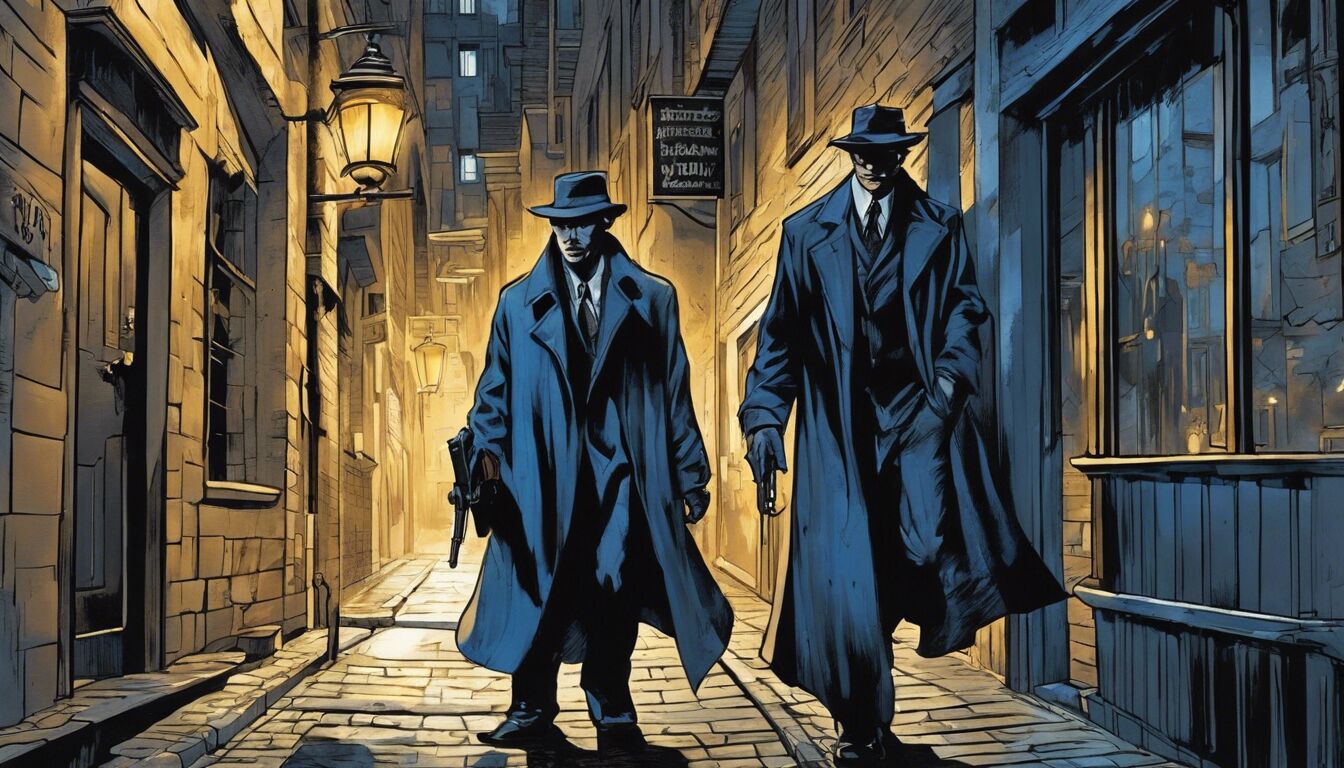blog
Color Choices to Elevate Your Book’s Appeal
Choosing the right colors for your book cover isn’t just about what looks good—it’s also about understanding how different hues can affect a reader’s emotions and perceptions. This is where the study of color theory and psychology becomes invaluable.
Color psychology delves into the effects that colors have on human behavior and feelings. For instance, blue often evokes a sense of calm and trust, making it a common choice for genres like self-help and business. On the other hand, red can stir up feelings of excitement or urgency, making it ideal for thrillers or action-packed narratives.
By comprehending these psychological nuances, you can make more informed decisions that resonate with your target audience on a subconscious level. Think of the last mystery novel you picked up; the dark, shadowy tones likely set the mood for suspense, even before you read the first page. Similarly, a romance novel with pastel shades can create a feeling of warmth and affection.
Remember, the key is not just to choose a color because you like it, but to understand how that color will be perceived by your readers. This delicate balance of aesthetics and psychology can markedly elevate the appeal of your book, potentially influencing buying decisions and reader engagement.
Creating a cohesive color palette
 Creating a cohesive color palette isn’t just an aesthetic exercise—it’s about harmonizing various elements to invoke a consistent emotional and visual experience for potential readers. This involves selecting a base color, supporting colors, and accent colors that together create a balanced and appealing visual narrative.
Creating a cohesive color palette isn’t just an aesthetic exercise—it’s about harmonizing various elements to invoke a consistent emotional and visual experience for potential readers. This involves selecting a base color, supporting colors, and accent colors that together create a balanced and appealing visual narrative.
Start by choosing a base color that aligns with the primary mood you want to convey. For instance, if your book is a soothing guide on meditation, you might choose a calming shade of blue as your base. This color would not only be dominant but would also set the tone for the additional hues you’ll select.
Next, identify supporting colors that complement your base color. Using color theory can be very beneficial in this step. Consider the color wheel: complementary colors (those opposite each other on the wheel) can add vibrancy, while analogous colors (those next to each other) can create a more harmonious feel. In our meditation guide example, soft greens or gentle purples could complement the base blue, enhancing the book cover’s sense of tranquility.
Don’t forget accent colors—these are used sparingly but can make certain elements pop and draw attention to key features, such as the title or an important visual symbol. Accents should contrast but not clash with your established palette. For a meditation book with a blue base and green secondary color, perhaps a touch of gold or white for the text could offer the right contrast, providing clarity and focus.
“Color does not add a pleasant quality to design – it reinforces it.” – Pierre Bonnard
It’s crucial to experiment with different variations of your chosen colors to see how they interact in various contexts. Utilize design software or color palette generators to test different combinations and view them in multiple mockups.
Finally, consistency is key. Ensure that the chosen palette is reflected not only on the cover but also in any related promotional materials, such as bookmarks, posters, or social media graphics. This creates a unified brand image and enhances the visual appeal across all platforms.
By carefully curating a cohesive color palette, you will not only elevate the visual appeal of your book but also forge a deeper emotional connection with your readers, making your book a memorable visual experience.
Choosing colors based on genre

When selecting colors for your book, it’s crucial to consider the genre as a guiding principle. Different genres have distinct visual languages and associated color palettes that can influence a reader’s expectations and emotions even before they flip open the book. Using color appropriately based on genre helps to immediately signal the book’s thematic essence and draw in the target audience.
For instance, the genre of mystery and thriller often employs darker colors like black, deep blues, and grays to cultivate a sense of suspense, danger, and intrigue. These color choices align with the mood of the genre, making readers instinctively feel a sense of anticipation and urgency. On the other hand, romantic genres thrive on softer, more tender hues such as pinks, soft reds, and pastels, which evoke feelings of love, tenderness, and passion.
Fantasy genres, rich with imaginative worlds and mystic elements, often use bold and vibrant colors like purples, golds, and emerald greens to transport the reader to otherworldly realms. These colors, grounded in color theory, signify magic, royalty, and adventure, enhancing the fantastical elements of the narrative. Alternatively, science fiction might lean towards cooler tones, including metallic silvers, futuristic blues, and whites, suggesting advanced technology and otherworldly settings.
Non-fiction genres also have their own color conventions. A self-help book might use uplifting and motivational colors like different shades of yellow, green, and blue to convey growth, positivity, and calm. Conversely, an academic textbook might utilize more neutral and muted tones such as blacks, whites, and earthy browns to present a more serious, authoritative aesthetic.
It’s also essential to take sub-genres into account. For example, a cozy mystery might opt for lighter, more inviting hues compared to the dark and somber shades of a hard-boiled detective novel. Similarly, a historical romance could integrate sepia tones and antique golds to reflect its bygone era, while a contemporary romance might stick with vibrant, modern colors.
Choosing the right colors based on genre not only ensures that your book stands out as visually appealing but also aligns with reader expectations, making it more likely to catch the eye of your intended audience. Therefore, understanding the visual language and color psychology of each genre becomes a fundamental aspect of designing your book cover.
Using contrasting colors for emphasis
Contrasting colors are a powerful tool in the realm of book design, often employed to draw the reader’s attention to critical elements on the cover, such as the title, author name, or key symbols that relate to the book’s theme. This technique capitalizes on the principles of color theory, which explain how colors placed next to each other can interact to create a visual impact that is more striking than when used alone.
Using contrasting colors effectively involves a deep understanding of color relationships. For instance, complementary colors—those that sit opposite each other on the color wheel, such as blue and orange, or red and green—naturally create a high level of visual tension and interest. When appropriately balanced, these combinations can make certain elements of your book cover almost pop off the surface, thereby catching the reader’s eye as they browse through a sea of other books.
Consider the role of text in your design. A title set in a bright, contrasting color against a more subdued background ensures it doesn’t blend in but stands out. For example, a thriller with an intense, dark background might have a title in a vibrant red or neon yellow to evoke a sense of urgency and excitement, matching the book’s content. Alternatively, a self-help book might use a calming background color like light blue with a contrasting white title, striking a balance between being eye-catching and serene.
Contrast can also guide the viewer’s experience as they interpret the visual elements on your book cover. A well-placed contrasting color can highlight specific areas, guiding the viewer’s gaze in a deliberate manner. This can be particularly effective in covers with intricate or busy designs where key details could easily be lost.
However, it’s important to maintain balance when using contrasting colors. Too much contrast can become overwhelming and distracting. Utilizing a primary contrast with subtler, less intense contrasts can help maintain visual harmony. For example, in a fantasy novel cover, the primary contrast might be a golden title against a rich, dark purple background, while secondary contrasts are achieved with smaller elements in silver or white, adding layers of depth without disturbing the primary focus.
Another way to manipulate contrast is through brightness and saturation. High-brightness colors against darker shades generate stark contrast, which is effective for urgent and intense books like horrors or thrillers. Conversely, contrasting muted tones with more vibrant hues can offer subtler emphasis, suitable for more gentle or contemplative genres like poetry or literary fiction.
In addition, consider the textural contrast created through color. A metallic or glossy finish for the title against a matte, darker cover can add a tactile element to the visual contrast, enhancing the reader’s sensory experience. This textured approach is particularly impactful for special editions or high-end publications.
Lastly, remember that cultural perceptions of contrast and color can also influence how your design is received. Varying colors have different connotations in different cultures, which might affect their perceived contrast and overall appeal. For example, while white and black are starkly contrasting in many Western cultures, the association of white with mourning in some Asian cultures can alter its impact and should be thoughtfully considered.
Implementing contrasting colors effectively ensures that your book cover not only stands out on the shelf but also communicates its core message clearly and powerfully. By understanding and applying the principles of color theory, you can create a design that is both visually striking and emotionally resonant, paving the way for a memorable reader experience.
The impact of cultural color preferences
 When it comes to designing a book cover, an often overlooked but incredibly crucial aspect is how colors are perceived across different cultures. It’s not just a matter of preference—colors can carry varied, deep-rooted meanings that influence how a book is received in different parts of the world. Understanding these nuances is essential, particularly if your book is being marketed internationally.
When it comes to designing a book cover, an often overlooked but incredibly crucial aspect is how colors are perceived across different cultures. It’s not just a matter of preference—colors can carry varied, deep-rooted meanings that influence how a book is received in different parts of the world. Understanding these nuances is essential, particularly if your book is being marketed internationally.
In many Western cultures, white is often associated with purity, simplicity, and cleanliness. It’s a common choice for minimalist designs and is frequently seen in genres like self-help and lifestyle. However, in several East Asian cultures, white is traditionally linked to mourning and funerals. Therefore, a white cover for a joyous or inspiring book like a romance or a motivational guide might not be as well-received in these regions.
Red is another color with divergent cultural meanings. In Western societies, red can symbolize anything from love to danger to urgency. It’s frequently used in thrillers and romance novels to evoke passion or excitement. In contrast, red in China is a color of luck, prosperity, and celebration. Knowing this, you might choose red for a business book aimed at Chinese entrepreneurs to convey success and fortune, while a Western business book might use blue to symbolize trust and dependability.
Consider green, which in many Western societies symbolizes nature, calm, and growth. It’s a common choice for books about health, wellness, and environmental topics. However, in some South American cultures, green can be linked to death. Such symbolic disparities mean that a wellness book with a green cover, well-suited for a North American audience, might need a different approach for Latin markets.
The implications of cultural color perceptions also extend to the subtler shades. Purple, often associated with royalty and luxury in Western cultures, might have entirely different connotations elsewhere. For instance, in some countries, purple is associated with mourning and might evoke sadness rather than sophistication or mystery.
Similarly, black, which is frequently used in genres like mysteries, sci-fi, and non-fiction due to its connotations of authority, seriousness, and the unknown, might not hold the same weight universally. In many cultures, black is the color of death and mourning, which could be both an advantage and a disadvantage depending on your book’s theme.
Religious and historical contexts often play significant roles in these color interpretations. Colors like saffron and gold might carry holy or historic significances in countries like India; thus, using these colors can add layers of meaning and respect, but misuse can also lead to backlash.
Global marketing strategies should take these perceptions into serious consideration. Using color theory as a base, you can fine-tune the emotional and cultural resonance of your book by selecting hues that align with the intended messages across various regions. In cases where your book cover needs to appeal to multiple cultures simultaneously, a more neutral or universally appealing palette can be crafted to minimize cultural clash while still conveying the essence of your book.
Testing your cover design with a focus group from your target cultural demographic can also provide invaluable insights and prevent missteps. Different countries may have varying reactions to your design, and understanding these nuances may mean the difference between a design that resonates and one that inadvertently alienates potential readers.
Color choices are more than just aesthetic decisions—they are a significant facet of cultural dialogue. By factoring in cultural preferences and understandings into your design, you respect your global readership and ensure your book’s appeal transcends boundaries, creating a universally resonant experience.
Testing and refining your color choices

After selecting your initial color choices, the next crucial step is to put those choices to the test and refine them to ensure that they effectively work in harmony and achieve the intended impact. This iterative process involves using a combination of practical tools, feedback mechanisms, and real-world applications to validate and perfect your color palette.
Consider employing design software like Adobe Illustrator, Photoshop, or even online tools such as Canva and Coolors to experiment with your color choices. These tools offer you the flexibility to easily swap out colors, adjust saturation and brightness, and see how your selections look in different layouts and formats. By manipulating these variables, you can pinpoint which combinations resonate best visually and emotionally, adhering closely to color theory.
Another indispensable approach is to create multiple mockups of your book cover. Each mockup should use variations of your chosen colors applied to different design elements like the title, background, and key symbols. This allows you to see how your color palette holds up in various iterations and under different lighting conditions, both in print and digital formats.
Feedback is also vital during this phase. Share your mockups with a diverse group of people, including individuals within your target audience, designers, and even people outside your demographic to gather a broad range of opinions. Conduct surveys or focus group discussions to understand how your color choices are perceived and whether they align with the book’s intended message and emotional tone. Pay particular attention to any recurring comments or suggestions about specific color combinations or elements that either stand out positively or detract from the overall design.
Incorporate real-world testing by printing sample covers. Viewing your design on a physical book can reveal different aspects you might miss when working purely on a screen. Notice how colors may shift or alter under different types of lighting and consider if adjustments are needed for the final print version to ensure consistency and fidelity to your original design intent.
Refinement also involves paying close attention to accessibility and readability. Ensure that there is sufficient contrast between the text and the background to make it easily readable for people with visual impairments. Tools like the Web Content Accessibility Guidelines (WCAG) contrast checker can aid in making sure your design meets accessibility standards, broadening your reach and inclusivity.
Once you’ve gathered all of this information, it’s time to make informed adjustments to finesse your color palette. This may involve tweaking the hue, saturation, and brightness of specific colors, or it might mean revisiting and modifying your initial palette choices based on the collective feedback and testing results. The goal is to arrive at a finely tuned color scheme that not only looks visually appealing but also effectively communicates the essence of your book while resonating with your target audience.
Remember that refining your color choices is an ongoing process. Market trends and cultural perceptions evolve, and staying attuned to these changes can help maintain the relevancy and appeal of your book cover. Keep iterating based on new insights and feedback to ensure your color palette remains impactful and aligned with your audience’s expectations. Check This Out.

